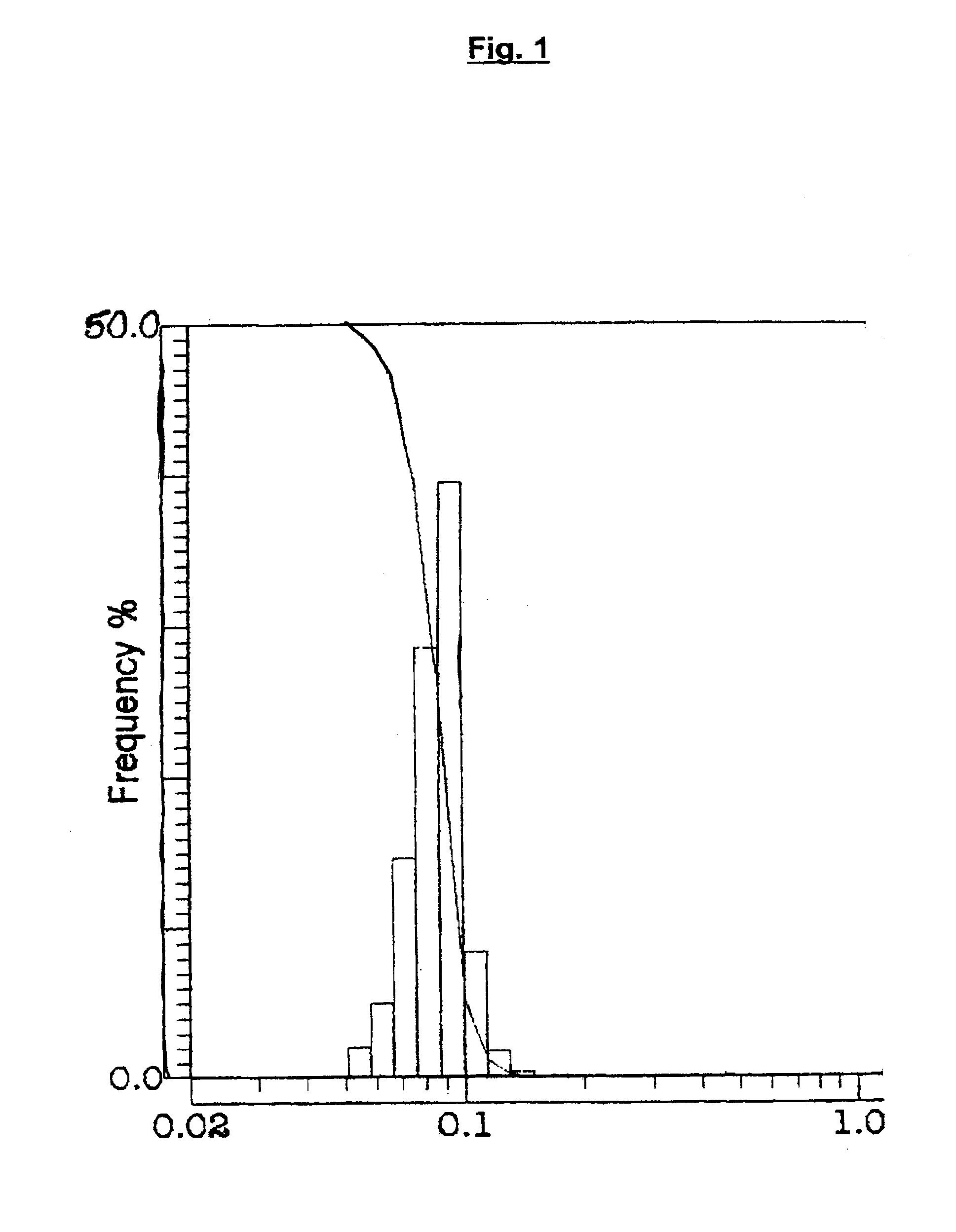Method of forming particles for use in chemical-mechanical polishing slurries and the particles formed by the process
a technology of chemical-mechanical polishing slurries and particle formation, which is applied in the field of process for producing particles, can solve the problems of particle formation with larger than expected crystallite sizes, and achieve the effects of reducing the efficiency of promoting formation, preventing or delaying the aqueous decomposition of such compounds, and reducing the size of crystallites
- Summary
- Abstract
- Description
- Claims
- Application Information
AI Technical Summary
Benefits of technology
Problems solved by technology
Method used
Image
Examples
example 2
Comparative Example
A dispersion of cerium oxide particles was formed using the same materials and procedures as set forth in Example 1, except that no Ti[OCH(CH.sub.3).sub.2)].sub.4 (titanium(IV) isopropoxide) was used. The cerium oxide particles thus formed had a narrow size distribution (D.sub.50 =89 nm; and D.sub.10 =72 nm) similar to the cerium oxide particles formed in Example 1, but the average crystallite size was only 42 .ANG..
example 3
A dispersion of cerium oxide particles was formed using the same materials and procedures as set forth in Example 1, except that no acetyl acetone (CH.sub.3 COCH.sub.2 OCCH.sub.3) was used. The cerium oxide particles thus formed had a narrow size distribution (D.sub.50 =80 nm; D.sub.90 =97 nm; and D.sub.10 =60 nm) similar to the cerium oxide particles formed in Example 1, but the average crystallite size was only 90 .ANG..
example 4
Four chemical-mechanical polishing slurries were formed using cerium oxide particles. Slurry A consisted of 100 parts by weight of the cerium oxide nanoparticle dispersion formed in Example 1. Slurry B was identical to Slurry A, except that the cerium oxide nanoparticle dispersion formed in Example 2 was used instead of the cerium oxide nanoparticle solution formed in Example 1. Slurry C was identical to Slurry A, except that the cerium oxide nanoparticle dispersion formed in Example 3 was used instead of the cerium oxide nanoparticle solution formed in Example 1. Slurry D was identical to Slurry A, except that the cerium oxide nanoparticle dispersion comprised conventional calcined cerium oxide (Ferro Electronic Materials SRS-616A) having an average particle size of D.sub.50 =141 nm dispersed in water at a pH of 10.0. Identical TEbS SiO.sub.2 (silicon dioxide) wafers were polished using Slurries A, B, C, and D, respectively. The polishing was performed using a Strasbaugh 6EC polish...
PUM
| Property | Measurement | Unit |
|---|---|---|
| temperature | aaaaa | aaaaa |
| mean average particle size | aaaaa | aaaaa |
| crystallite size | aaaaa | aaaaa |
Abstract
Description
Claims
Application Information
 Login to View More
Login to View More - R&D
- Intellectual Property
- Life Sciences
- Materials
- Tech Scout
- Unparalleled Data Quality
- Higher Quality Content
- 60% Fewer Hallucinations
Browse by: Latest US Patents, China's latest patents, Technical Efficacy Thesaurus, Application Domain, Technology Topic, Popular Technical Reports.
© 2025 PatSnap. All rights reserved.Legal|Privacy policy|Modern Slavery Act Transparency Statement|Sitemap|About US| Contact US: help@patsnap.com

